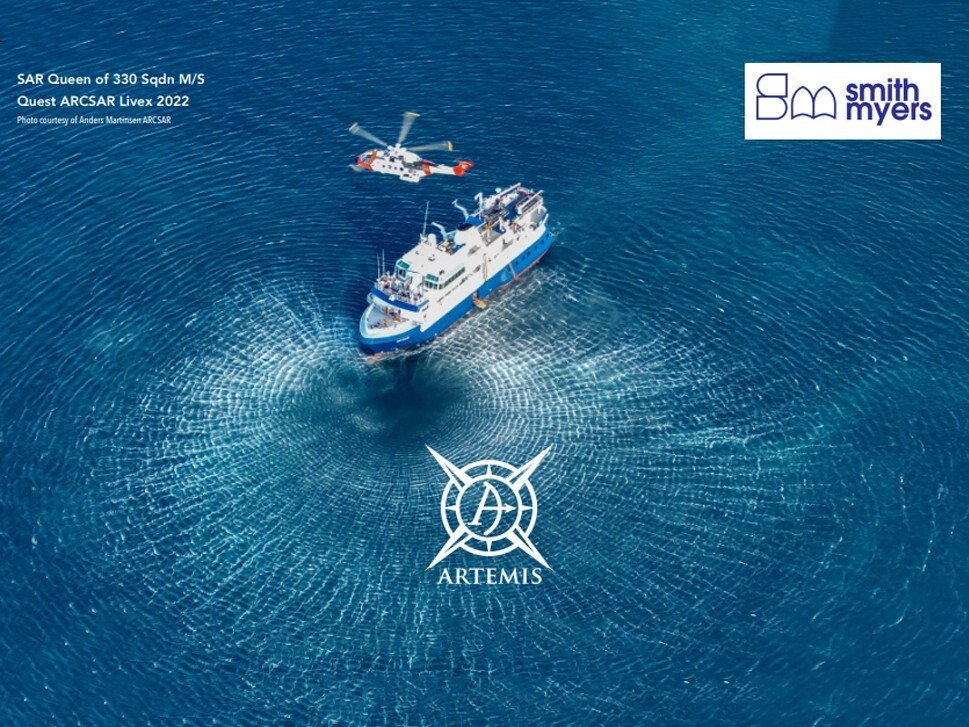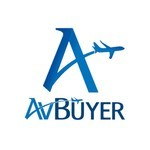- 15 Sep 2022
- AvBuyer
- GA Buyer Europe
Detect, Locate, Communicate
Smith Myers celebrates 35 years of engineering excellence. Find out about Artemis, their award-winning mobile phone detection system that can turn any mobile phone into a rescue beacon. It can be used by manned or unmanned, aircraft, rotary or fixed wing.
Back to Articles
Smith Myers, a company based in Bedfordshire, U.K., designers and producers of Artemis, the award-winning mobile phone detection system, is this year celebrating 35 years in advanced technology design. Founded in 1987 by Peter Myers and Tony Smith, design engineers with expertise in high-speed communication and military applications, the company prides itself on a workforce of test and design engineers drawn from the likes of telecommunications and engineering giants, such as British Aerospace and Marconi Instruments, with expertise coming from diverse areas such as Gaming, Polar Expedition, Counter IED and The Brownies.
“We’re not entrepreneurs or academics,” said Peter Myers, the company’s joint managing director. “We are engineers with a long history in design and production of test and measurement equipment for the cellular network industry – many years of real-world technical experience goes into our products.”
Artemis is a Smith Myers award-winning design that can turn any mobile phone into a rescue beacon. It can be used by manned or unmanned, aircraft, rotary or fixed wing.
Since it’s introduction two years ago into the Norwegian Airforce SAR Queen fleet of AW101 helicopters, operated by 330 Squadron RNoAF, Artemis has been a valued addition to the sensor array this advanced SAR aircraft has on board. The mobile phone detection and location technology is proving to be as vital as any of the AW101’s new sensor systems and a fundamental leap in SAR capability, allowing operators to spend less time searching.
With Artemis, Smith Myers has developed cellular signal location technology for the challenging airborne SAR environment.
“Artemis was designed specifically for this task,” Myers said. “We’re not taking someone else’s receivers or software and repurposing it.”
Unlike traditional direction-finding sensors that rely on complex antenna arrays and multiple aerials on an airframe, Artemis uses only two antennas and its multiple distance estimation methods, employing an auto triangulation algorithm to accurately derive the latitude and longitude of the mobile phone location.
“When the system connects with the phone, we have the aircraft’s GPS position, so we measure the distance to the phone, and do our own triangulation,” Myers explained. “We are performing multiple measurements every second. As the aircraft is moving, we get finer and finer resolution on the location. We have a range of up to 35 kilometers and at that distance, we can locate a phone within 100 metres.”
In natural disasters where cellular coverage may be unavailable or compromised, Artemis “works even better because the phone is looking for us,” he noted. “In a forest fire, for example, where the cellular network is out, we can fly over all the active phones, and they will register with Artemis. We can send an automated text message advising those people which direction the fire is coming from and which way to flee, or we can ask if anyone needs medical assistance and talk directly with that person. We can also coordinate with ground assets via text or voice calls. If the phone is on, we can locate it.”
Artemis can be employed as a standalone system or easily integrated with other sensors into an aircraft mission system, such as Carte Nav’s AIMS-ISR, Shotover GEAR, and many others, enhancing its performance in low visibility or instrument meteorological conditions.
“The mission system reads the latitude and longitude from Artemis, and then steers the aircraft EO/IR camera to look at that position,” Peter Myers said. “With the phone details from a network operator, we can look for that phone specifically and reject all others, calculate its position, and then the camera can be slewed to look there. We add tremendous value to any existing platform with EO/IR cameras. Night missions can be undertaken with a high probability of a rapid positive outcome”
“With Artemis, Smith Myers has developed cellular signal location technology for the challenging airborne SAR environment.”
Even without other sensors, Artemis can provide exceptional signal location. “It has embedded mapping. You can even drive it from a phone using a web browser if you have Wi-Fi in the cabin,” he noted.
Smith Myers designs and manufacturers all products — hardware and software — in house and has developed Artemis for fixed-wing, rotary-wing, and unmanned platforms in configurations ranging from 15.5 kilograms (34lb) to 560 grams (1.2 lb) — the latter has been fully integrated into the ECHO payload on the Teledyne FLIR Sky Ranger R70 UAS.
This year sees the introduction of two new configurations of Artemis: The T-A, which has AIS and COSPAS SARSAT receivers along with the usual Artemis features weighing in at 4.2kg (9.3lb); and the T-U Cellular only, at a reduced SWaP of 1.4kb (3lb).
All the Artemis products have been rigorously tested for all environmental extremes and survived brutal DO160/MilStd 810 qualification testing, including extensive EMC testing.
The value Artemis offers to search and rescue, disaster relief, and other operations was well understood even before Leonardo selected the system for the AW101 SAR platform. But in 2018, the Royal Aeronautical Society recognised the strength of that partnership with its team silver medal award. “That was quite an honour,” Myers said.
Recently 330 Squadron were key players in an Arctic mass-rescue exercise, organised by ARCSAR, an EU-funded project with participants from 12 different countries. Livex 2022 is the most significant event in the ARCSAR project. Conducted at the most northern populated area, well within the Arctic Circle, 330 Squadron worked with the Norwegian Coastguard to rescue passengers from a stricken Arctic Cruise vessel with 50 passengers, and 25 crew. Peter Myers, one of the founders of Smith Myers was
The mass rescue exercise took place on the 31st of August in Isfjorden, just outside of Longyearbyen, Svalsbard, around 600 miles from the North Pole, and well within the Arctic Circle. Various experiments and trials were conducted on the days leading up to the actual MRO exercise, such as COSPAS SARSAT beacons. The actual MRO exercise involved a fire onboard M/S Quest from PolarQuest, a project partner, with a rescue operation from the Norwegian Coast Guard vessel Barentshav in conjunction with the SAR Queen from 330 Squadron, Banak - Norway.
The SAR Queen, a Leonardo AW101, the Norwegian all-weather Search and Rescue helicopter, equipped with the Smith
Peter Myers commented
“It was a well-organised event with impressive professionalism shown by 330 Squadron, Norwegian Coastguard, M/S Quest crew and the Polar Quest expedition team. And of course, Artemis worked flawlessly at 79⁰ North.”
ABOUT THE AUTHOR:
Peter Myers, Managing Director of Smith Myers, started his career as an electronics engineering apprentice with British Aerospace, UK (Now BAE Systems). He is team leader on the ARTEMIS project, from initial specification, through DO160 G, Mil-Std 810G testing, to flight trials, and customer acceptance.
Smith Myers has over 35 years’ experience designing cellular radio systems and are experts in Protocol Stacks, Software Defined Radio, Digital Signal Processing, and Wideband Linear RF Power Amplifiers.
Related Articles
- 01 Sep 2022
- AvBuyer
- GA Buyer Europe
- 17 Aug 2022
- Volker K. Thomalla
- GA Buyer Europe


